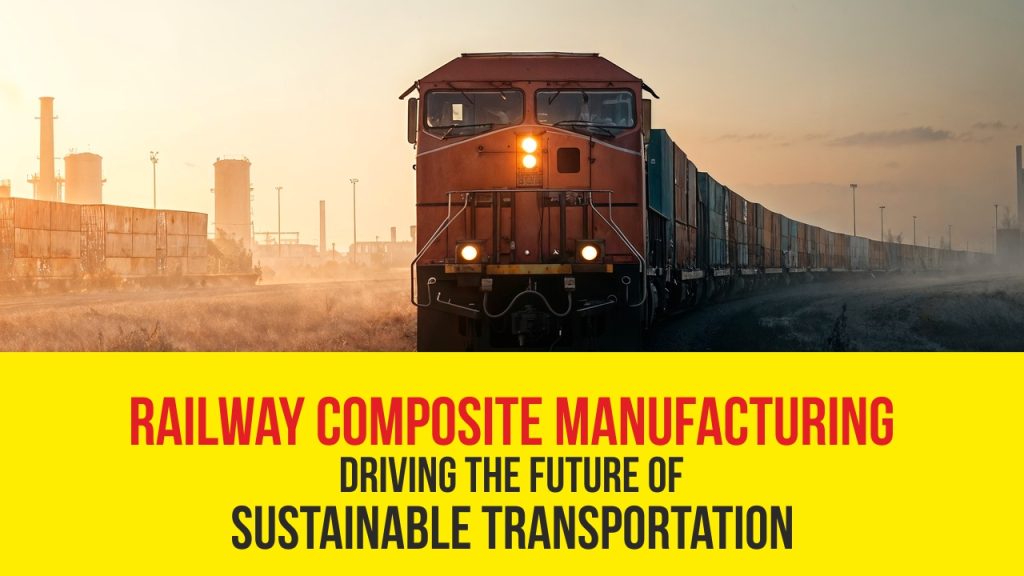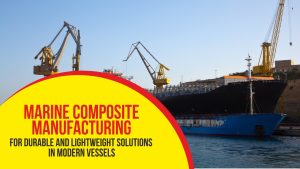Railway composite manufacturing is revolutionizing the transportation sector by introducing lightweight, durable, and environmentally friendly materials into rail systems. As global transportation networks evolve, the demand for sustainable solutions has surged, positioning composites as a key enabler for modern rail infrastructure. Rockman Advanced Composites is at the forefront of this transformation, delivering high-performance composite materials that combine strength, longevity, and eco-efficiency to redefine rail transportation standards.
Transforming Rail Infrastructure with Composites
Traditional rail systems rely heavily on metals such as steel and aluminum, which, although strong, present limitations including high weight, susceptibility to corrosion, and significant maintenance requirements. Railway composite manufacturing introduces polymer-based composites reinforced with carbon fiber, glass fiber, or hybrid materials that overcome these challenges. These advanced composites offer a superior strength-to-weight ratio, making rail components lighter without compromising structural integrity. Lighter trains reduce energy consumption, minimize track wear, and contribute to lower operational costs over the lifecycle of the system.
Beyond weight reduction, composites provide exceptional resistance to environmental stressors. Exposure to moisture, UV radiation, and chemical pollutants can degrade conventional materials, leading to frequent maintenance or replacement. Composites, however, exhibit enhanced corrosion resistance, improved thermal stability, and reduced fatigue, ensuring components perform reliably under harsh operating conditions. This durability extends the service life of rail components while reducing environmental waste associated with frequent replacements.
Key Components Benefiting from Composites
Several critical components in railway systems have seen substantial performance gains from composite integration. Train interiors, such as flooring, seating, and panels, benefit from lightweight composites that enhance passenger comfort while reducing overall train weight. Exterior applications, including body shells, roof panels, and sidewalls, leverage high-strength composites to improve aerodynamic efficiency and reduce energy consumption.
Moreover, functional components like couplers, bogies, and brake systems are increasingly manufactured using composites. These materials absorb vibrations, reduce noise levels, and offer high-impact resistance, enhancing both passenger safety and operational reliability. Rockman Advanced Composites specializes in delivering tailored composite solutions for these applications, ensuring performance is optimized according to specific rail system requirements.
Sustainability as a Core Advantage
Railway composite manufacturing is intrinsically aligned with sustainability goals. Lighter trains and energy-efficient designs result in lower fuel consumption and reduced greenhouse gas emissions. Additionally, many composite materials are recyclable or derived from bio-based polymers, minimizing reliance on non-renewable resources.
Lifecycle assessments indicate that composite components can significantly reduce the carbon footprint of railway systems. By combining durability, lightweight properties, and recyclability, composites provide a holistic approach to creating eco-friendly transportation networks. Rockman Advanced Composites focuses on sustainable manufacturing processes, employing low-emission production techniques and advanced material optimization to minimize environmental impact.
Innovations Driving Composite Performance
The field of railway composite manufacturing is witnessing remarkable innovations that push material performance to new heights. Hybrid composites that integrate carbon fiber with glass fiber or aramid fibers deliver superior mechanical properties and enhanced resistance to fatigue and impact. Advanced resin systems offer improved thermal performance and flame retardancy, critical for safety in passenger and freight trains.
Additive manufacturing, or 3D printing, is increasingly being explored to create complex composite components with optimized weight distribution and minimal material waste. This approach enables the production of parts that were previously difficult or impossible to manufacture using traditional methods. Rockman Advanced Composites leverages state-of-the-art fabrication technologies, ensuring each component achieves the desired balance between strength, weight, and durability.
Enhancing Safety and Reliability
Safety remains a non-negotiable aspect of railway operations. Composite materials enhance safety by providing high energy absorption during impacts, reducing risks to passengers and cargo. For instance, composite crash barriers, panels, and couplers are engineered to withstand collisions while maintaining structural integrity.
In addition, composites offer superior resistance to environmental degradation, ensuring components maintain consistent performance under extreme temperatures, humidity, and chemical exposure. This reliability reduces unscheduled maintenance and potential system failures, contributing to smoother, safer rail operations. Rockman Advanced Composites places rigorous quality standards at the heart of production, delivering materials that meet stringent safety and regulatory requirements.
Economic Impact and Operational Efficiency
Adopting composites in rail systems translates into significant economic advantages. The reduced weight of trains lowers energy consumption, leading to cost savings in fuel or electricity. Fewer replacements and lower maintenance requirements reduce lifecycle costs, enhancing the economic sustainability of rail operations.
Furthermore, the flexibility of composite materials allows for faster manufacturing and installation of rail components. Modular composite systems can be easily replaced or upgraded, minimizing downtime and operational disruptions. By integrating composites, railway operators achieve a blend of performance, efficiency, and cost-effectiveness that supports long-term growth.
Future Outlook for Composite Rail Systems
The future of railway systems is closely linked to innovations in composite materials. Ongoing research in nano composites, bio-based polymers, and smart materials promises to deliver even lighter, stronger, and more adaptive solutions. Smart composites embedded with sensors can monitor structural health in real-time, predicting maintenance needs and preventing failures before they occur.
Electrification and high-speed rail networks will increasingly rely on composite materials to meet stringent performance and environmental criteria. By enabling lightweight designs, improved energy efficiency, and enhanced safety, composites will continue to shape the evolution of rail transportation. Rockman Advanced Composites is actively participating in these advancements, providing cutting-edge solutions that anticipate industry needs and technological trends.
Conclusion
Railway composite manufacturing represents a paradigm shift in transportation engineering, merging performance, sustainability, and innovation. The integration of high-strength, lightweight, and environmentally responsible materials transforms rail systems, offering economic, operational, and ecological benefits. Companies like Rockman Advanced Composites play a pivotal role in advancing these technologies, delivering tailored solutions that redefine what is possible in rail design and infrastructure.
As the demand for greener and more efficient transportation grows, composites will remain at the core of this transformation, enabling safer, lighter, and more sustainable rail networks for the future. The adoption of these materials is not merely a technical advancement but a strategic investment in the longevity, efficiency, and sustainability of railway systems worldwide.








